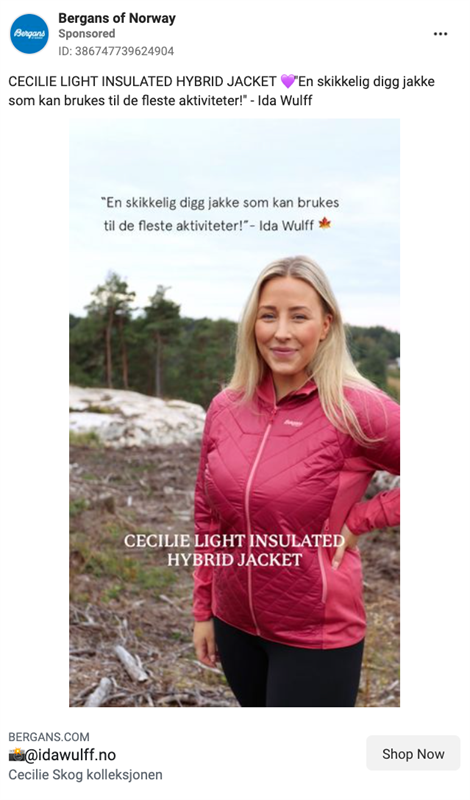Boosting your social advertising in 2022
The whole online sphere is somewhat of an enigma. Constant updates, new tools and features, and algorithm changes make it hard to decipher what content gets shown and how you can boost your online presence. It’s true that the online world, and especially social media, have changed a lot since Facebook was first launched back in 2004. Good content alone is no longer sufficient to guarantee views.

Before zooming in on tactics to boost your social advertising, let's take a step back and explore the basics: Social Advertising is one of the sub-areas, alongside Search Engine Optimization (SEO) and Search Engine Advertising (SEA) that conjointly form Search Engine Marketing (SEM). Online advertising has unique advantages compared to the more traditional forms of advertising such as print, tv or radio. “Online advertising allows you to leverage netizens’ data,” explains SEO and online advertising specialist, Niels Bosmans. “By using different metrics, you can really narrow down your audience, which results in better targeted campaigns. Furthermore, online ads are more dynamic because you can test and adjust. You don’t have to blow up your entire budget on one campaign. You can start small and put more resources into campaigns that work. Which is a huge asset of online advertising”, Niels says.
Pay to play
While SEO intends to drive organic traffic to your platform, SEA and Social Advertising drive non-organic or paid traffic. Social advertising is a form of advertising created specifically for social media platforms such as Facebook, Instagram, Twitter, LinkedIn, or others.
According to Niels companies before were convinced that more was better and wanted to be present on every channel. Nowadays they are making more strategic decisions about their social media presence, based on where their target audience is most active, and they have the most valuable reach.
“Every platform has its own campaign building structure, and each system in itself is pretty straightforward. Since for some companies budget remains a hurdle, they prefer to design their own ad campaigns. However, since they don’t thoroughly understand the mechanisms, they often end up with sloppy campaigns that seldom yield the desired results. Visibility comes at a price,” Niels warns. He recommends investing in professional advice, because it pays off.
“Determining the ‘right’ budget to invest in a specific campaign remains very difficult”, Niels continues. “Compared to other, traditional media, there are no kits that show the ROI. Some advertising companies draw up an overview based on a couple of parameters using basic formulas and tips, but these standard presentations are a bit lousy. After all, the strength of social media advertising lies precisely in the possibility of adapting and fine-tuning.”
Social advertising strategies
Now that we have a more global view of social advertising, let’s take a dive into some specific features of online advertising such as look-a-likes, retargeting, and dynamic product ads.
Niels explains that originally social advertising targeted a specific audience based on standardised profiles, using background information. But social advertising has evolved a lot since the early days. “Now, for example, companies are even able to import existing customer lists into the Facebook advertising centre to search for look-a-like profiles. In other words, you can search for new profiles that match your target group based on your existing customer list. LinkedIn also offers this option. This might sound like a perfect formula, but bear in mind that there’s a threshold, not all email addresses of your customers will match their social media profiles. And there is not always a match between private and work email addresses.”
“Another increasingly important tactic in terms of social media marketing is retargeting”, says Niels. “Here the aim is to reach visitors who have previously browsed your website again through image or text ads on third party websites. Social retargeting is also becoming more frequent on the average timeline. With social retargeting, you can attract potential customers back to your website and enhance customer loyalty. Retargeting can be very useful in terms of online marketing and potential sales, but when not done correctly it can be an expensive ride. It is not effective to show your campaign to everyone, hoping it will generate conversion. As with all forms of marketing, you should get a clear picture of your target audience before you start building your (retargeting) campaign.”
Retargeting can also be a powerful tool to tackle shopping cart abandonment. Those customers who do not complete their purchase are clearly interested in your product, or they wouldn’t have initiated a purchase in the first place. So even if they don’t hit the ‘buy now button’, you’re left with a large target group of potential clients. Retarget shoppers on your website or in your mobile app to remind them of the items they viewed but didn't buy.
And then there are Dynamic Product Ads (DPAs). “These ads are a form of social advertising, that use personalized ad templates tailored to individual consumer data. DPAs look exactly like other ads on social media such as single images, carousels, stories, or collection ads, but are customized using machine learning to scale advertising. This is especially useful for brands that have a large volume of products. With dynamic product ads, products are automatically pulled from your shop instead of having to do it manually. This way of advertising can take a lot of work out of your hands, but you do have to make sure that the linking is up and running. This way you can adjust advertisements to dynamic profile parameters.”
The power of authenticity
When reading about these different tactics, you might feel that social advertising lacks authenticity. But that needn’t be the case. To increase the sense of authenticity it could be good to work with user generated content (UGC) or influencer marketing – when it’s done right, it helps win the trust of customers.
Consumers have become more online-savvy and less susceptible to traditional advertising, so social proof and authentic content have become even more important. “In a way, UGC is a type of unsolicited advertising”, Niels says. “What people share about your product or brand is very powerful in terms of marketing. People are more inclined to buy something when it’s recommended by a peer. When satisfied customers mention your brand, you can leverage that content. By linking social proof and social ads you can create a powerful formula. With UGC platforms like Flowbox, you can export a UGC product feed, which allows you to use more authentic images rather than standard product shots. This type of organic and authentic content works best because it increases your credibility and trustworthiness.”
“You could also set up a ‘like or share action campaign’, encouraging people to tag your brand. Even if this is considered as forced UGC it’s still more authentic than regular advertising”, Niels advises.
A great example of a brand utilizing UGC in social advertising is Bergans of Norway. They encourage their loyal customers and brand ambassadors to share images of themselves enjoying the products, and then reuse these authentic visuals in their campaigns. Bergans takes this a step further by making sure to include a customer review as well as the original poster’s Instagram handle, to showcase their community engagement and trust.
And when the potential Bergans of Norway customer sees this advert and clicks on it, they are taken through to the product page which incorporates a gallery of UGC content, enhancing the customer experience and providing social proof to encourage sales.

Clever combinations
In addition to UGC, Niels suggests that companies should also focus on knowledge sharing. “Blogs, where an expert or influencer shares his/her thoughts can be an excellent way to do so. Customers are often looking for answers, so make sure your brand provides the answers and that you are present in the search results. “
“Someone else’s opinion about your product is more valuable than your own marketing pitch. Some people look down on influencer marketing, but their reach is often underestimated. It’s true that some of them receive large amounts of cash to promote a product, but it’s still cheaper than traditional advertising, and you are immediately in contact with the right target group – provided that the PR companies have done their screening properly. If not, influencer marketing can give you a bad name and damage your reputation.”
As always, the true power lies in clever combinations, says Niels. “Online or social advertising is a great way to supplement your marketing efforts and can help to generate quick results. But rather than a stand-alone tactic, it should be part of an integrated branding, communication, and marketing strategy.”
According to Niels some easy guidelines to keep in mind are:
- Take care of your overall branding.
- Determine your digital strategy: Focus your efforts on the channels where they have the most effect and create value for your target group and your company.
- Provide good content and optimize your SEO.
- Develop a good combination between social ads and SEA.
- Think outside the box: Playful actions work better than forced advertising. Original, fun, and involved campaigns are more likely to be snapped up by consumers.
To sum up, advertising, including social ads, is essential to stand out in the sea of social media. “If you don’t advertise it's like starting a business and not talking about it”, Niels concludes. “It is important for your brand to be present and for customers to find you. To achieve that you need to build a solid marketing plan that includes SEO, SEA, and social advertising to ensure you reach more people and grow your audiences.”
Interested in getting started with UGC in social advertising? Click here to book a demo.
More information:
Cecilia Rehn, Digital Marketing Manager, Flowbox
cecilia.rehn@getflowbox.com
About Flowbox
Flowbox is an award-winning SaaS company offering a visual marketing platform to help brands leverage and distribute social content throughout the buyer journey to increase engagement, social proof and sales. Flowbox's heart lies in how technology can help brands generate and use owned, paid, earned and user generated content for a more effective, converting and transparent marketing and e-commerce. Through our platform, our customers are able to collect, moderate and publish content to their website, online shop and social channels.



